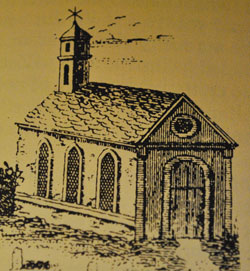
The series will explore words used in the Episcopal Church that are arcane, unusual or have changed over time. This week’s word-parishioner.
We know the parishioners of St. Peter’s today – those people who attend the church. Granted it’s a subset of all that choose to join a church, one of many. In the Colonial Church, all were required be a part of one church – Anglican. No formal establishment of Baptists, Presbyterias and they paid the same annual parish levies. (These dissenters had to rely on voluntary contributions to their own churches.) Thus everyone in your parish was a member – men, women, indentured servants and yes, slaves.
Earlier research emphasized how colonials were unchurched despite laws to the contrary. Although there are few surviving parish registers, recent research has shown that annual baptisms nearly approximated annual white births. Actual attendance, however is a problem since Va. parishes kept no membership roles. Attendance was mandantory and it differed over the 170 years of colonials from one or two times a month. If you violated the law you could be fined five shillings or 50 pounds of tobacco paid to the churchwardens. In 1750, that would amount to $31 (2006).
Virtually every county recorded non-attendees with most of the prosecutions in the older Tidewater area. Dissenters, however, were excluded from attendance requirements.
Twice yearly at May and November county court sessions, grand jurors, in response to information provided by the sheriff, churchwardens, vestrymen, justices, other officers of the court, or from their own personal knowledge, presented individuals suspected of violating the laws prescribing the conduct expected of Virginians
Parshioners entering colonial churches found them divided by class, sex. They had assigned areas to sit with men and women divided. Pews were just being introduced in England in the 18th paid for by the wealthy but in Virginia they were a standard furnishing erected at public expense. The wealthy were assigned the best pews toward the front. Benches were usually reserved in the back for servants, slaves and other lower classes. Galleries originated by the wealthy parishinioners who were not satisfed even when they commanded the best pews.
Church buildings were simple in the colonial era – usually only one room in a rectangular design. They were wooden at first and then brick became more popular, particularly in the 18th century. They expanded as colonial planters donated land for the cause. Some churches in the northern Virginia area late in the 18th century were two story.
Essential to Anglican worship were the pulpit and communion table. Pulpits stood two or three "decks" high located on the north or south walls. The communion table often made of black walnut or white oak and with a low wooden railing was situated along the interior east wall. (Churches were built in an east/west direction) . Unlike in today’s church, communion was only held three or four times a year as a reaction against the Catholic past. A part of the Church’s 1606 canon was a requirement for the 10 commandments to posted along the east end. In Virginia churchdes, wall tablets were situated there with the 10 commandments, Apostles’ Creed and the Lord Prayer.
One item that Colonial Churches did not have was an organ – only about 5 or 6 did. So singing was generally done unaccompanied usually led or announced by the clerk. The latter was a lay official whom we call the officiant today. Congregations sang hymns but also the Psalms according to metrical settings.
